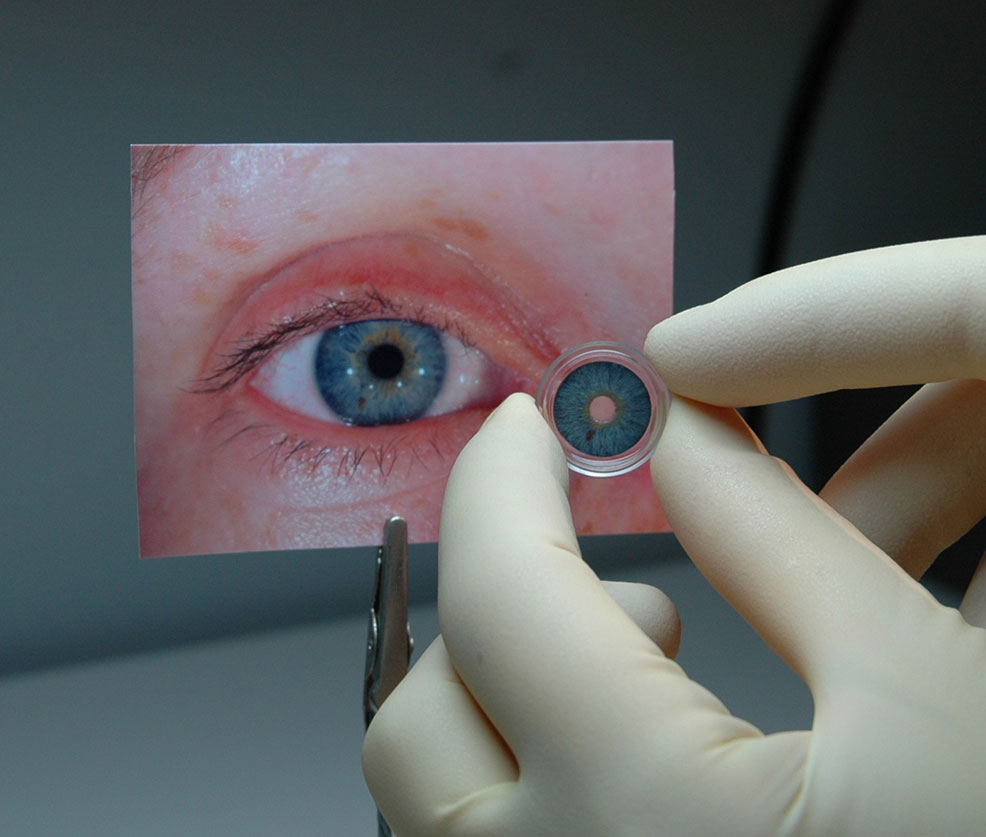
4th June 2018 FDA approves first artificial iris The U.S. Food and Drug Administration (FDA) has approved the first stand-alone prosthetic iris in the United States.
This surgically implanted device can treat adults and children whose iris (the coloured part of the eye around the pupil) is completely missing or damaged due to a condition called aniridia or other damage to the eye. Congenital aniridia is a rare genetic disorder, in which the iris is completely or partially absent. It affects approximately 1 in 50,000 to 100,000 Americans. The iris controls the amount of light entering the eye, and those with aniridia have sensitivity to light and other severe vision problems. In addition to congenital aniridia, the CustomFlex Artificial Iris can treat iris defects caused by a range of other problems, such as albinism, traumatic injury or surgical removal due to melanoma. The device is made of a thin, flexible, medical-grade silicone and is custom-sized and coloured for each individual patient. A surgeon makes a small incision, inserts it under the incision, unfolds it and smooths out the edges using surgical instruments. The prosthetic iris is held in place by the anatomical structures of the eye or, if needed, by sutures. The safety and effectiveness of the artificial iris was demonstrated in a clinical trial of around 400 patients with aniridia or other defects. This study measured patients' self-reported decrease in severe sensitivity to light and glare post-procedure, health-related quality of life, and satisfaction with the cosmetic improvement or appearance of the prosthesis. More than 70% of patients reported significant decreases in light sensitivity and glare, as well as an improvement in health-related quality of life following the procedure. In addition, 94% were satisfied with the artificial iris' appearance. The study found low rates of adverse events associated with the device or the surgical procedure. "Patients with iris defects may experience severe vision problems, as well as dissatisfaction with the appearance of their eye," said Malvina Eydelman, M.D., director at the FDA's Center for Devices and Radiological Health. "Today’s approval of the first artificial iris provides a novel method to treat iris defects that reduces sensitivity to bright light and glare. It also improves the cosmetic appearance of the eye in patients with aniridia."
Comments »
If you enjoyed this article, please consider sharing it:
|







